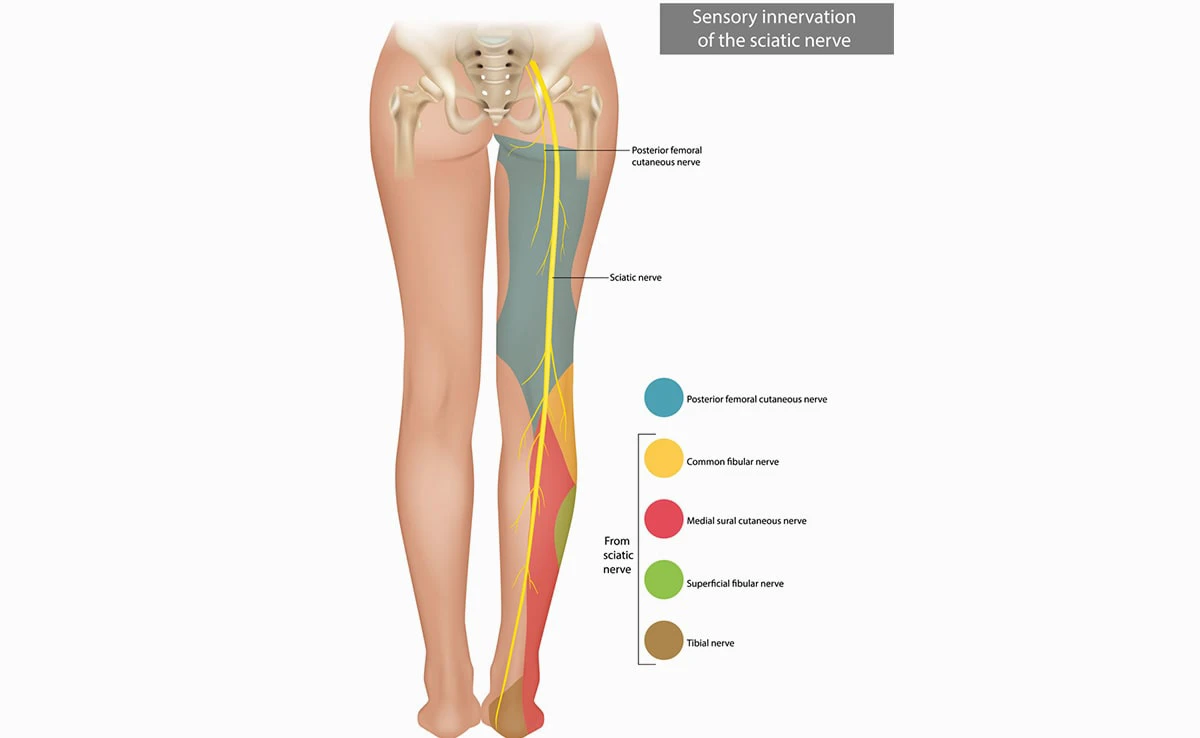Back pain is a common ailment that can be either acute (starting abruptly) or chronic (lasting more than three months). Back pain can be anything from muscle soreness to a burning, stabbing, or shooting sensation.
There are ways to avoid or lessen the majority of back pain occurrences, particularly in those under 60. In her latest Instagram post, nutritionist Anjali Mukerjee explains how a sharp, radiating lower back pain from your down to the leg could be sciatica, which is a condition linked to nerve inflammation.
Anjali Mukerjee shared that one should check their nutrient levels to watch out for Vitamin D, Vitamin B12, and Magnesium, in order to manage and prevent this shooting pain. “Make sure your blood levels are in check, and include these in your diet regularly,” she wrote in the caption of her post.
The nutritionist added that one can reduce the pain and promote nerve health naturally with the correct physiotherapy and exercises.
https://www.instagram.com/p/undefined/embed/?cr=1&v=14&wp=384&rd=https%3A%2F%2Fm.dailyhunt.in&rp=%2Fnews%2Findia%2Fenglish%2Fndtvenglish-epaper-ndtvnew%2Fhow%2Bto%2Bmanage%2Band%2Bprevent%2Bpainful%2Bsciatica%2Bnutritionist%2Bexplains-newsid-n661713662%3Flistname%3DtopicsList%26index%3D59%26topicIndex%3D0%26mode%3Dpwa%26action%3Dclick#%7B%22ci%22%3A0%2C%22os%22%3A654789.200000003%2C%22ls%22%3A1387.8999999910593%2C%22le%22%3A1411.3999999910593%7D
What is sciatica?
Sciatica is a nerve pain that results from irritation or injury to the sciatic nerve. It might cause discomfort, but it can also cause tingling or numbness in the bottom or back, which can spread down the leg, as per the Cleveland Clinic. It can be classified as either true sciatica or sciatica-like conditions.
Your legs, hips, buttocks, or lower back may be impacted by the signs. Some symptoms may also reach as far down as your feet and toes. Anywhere some nerves link to the sciatic nerve, one may have mild to severe pain if you have sciatica.
Sciatica affects about 40 per cent of Americans at some point in their lives. Except in cases of injury, it seldom ever occurs before the age of 20.
Conditions that can lead to sciatica include degenerative disk disease, herniated disks, foraminal stenosis, spinal stenosis, spondylolisthesis, osteoarthritis, pregnancy, and conus medullas syndrome, among others.
Apart from the aforementioned tests, suggested by the nutritionist, one can undergo spine X-rays or computed tomography (CT) scans, Magnetic Resonance Imaging (MRI) scans, nerve conduction velocity studies, Electromyography, and Myelogram to help with diagnosing sciatica.
Sciatica treatment usually aims to improve mobility and reduce pain. One can perform several therapies on their own, such as self-treatment (ice, heat, stretching and activity) and conservative treatments (prescription medications, spinal injections, and physical therapy). Surgery can be the best course of action when sciatica is more severe.
In her previous Instagram post, nutritionist Anjali Mukerjee shared secrets to anti-ageing and mentioned that stress, alcoholism, smoking, poor diet, and a sedentary lifestyle can all accelerate ageing.
According to Anjali Mukerjee, antioxidants (both natural and supplemental forms) consumption, stress-free lifestyle, intermittent fasting, adequate protein intake, regular exercise, and a positive outlook can help slow down the .
